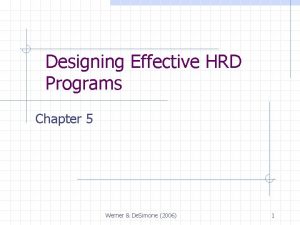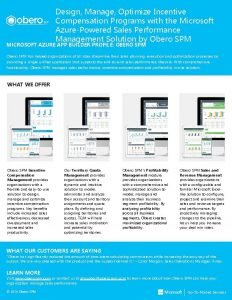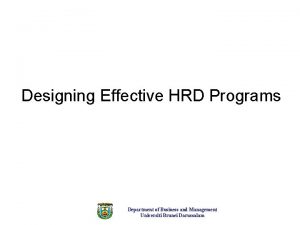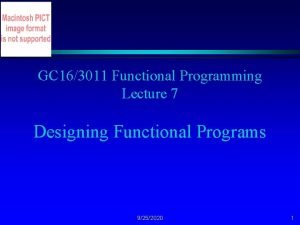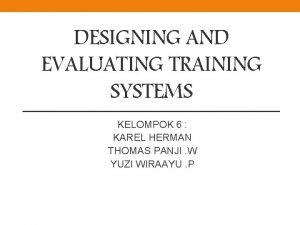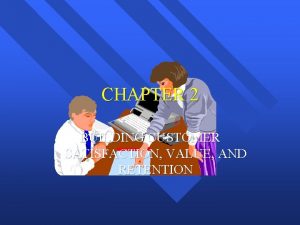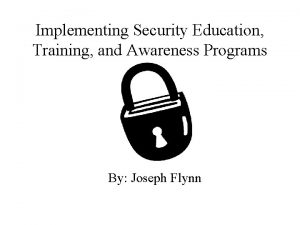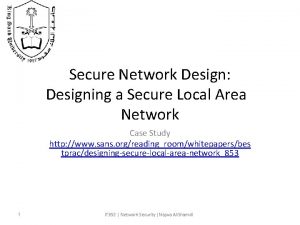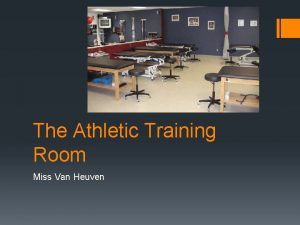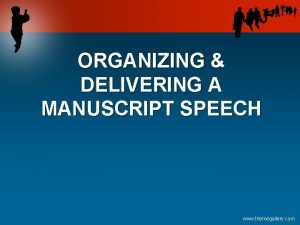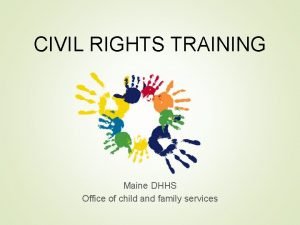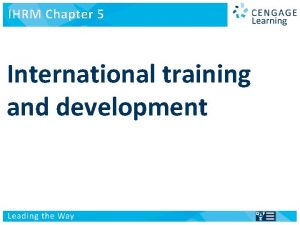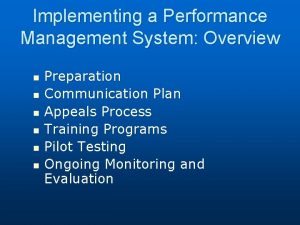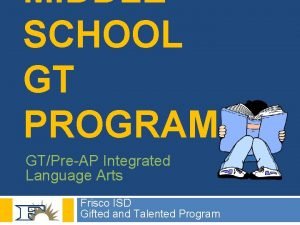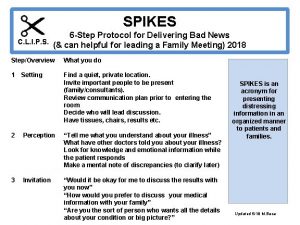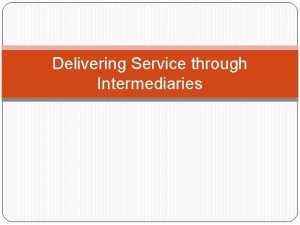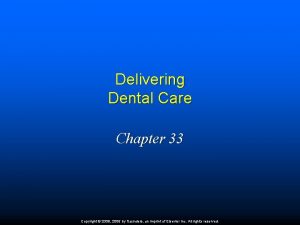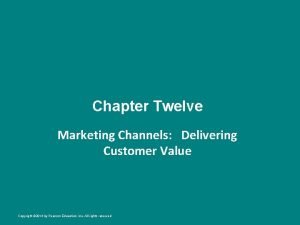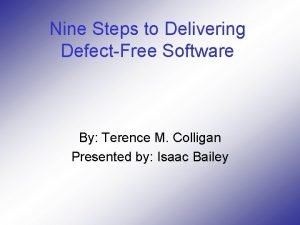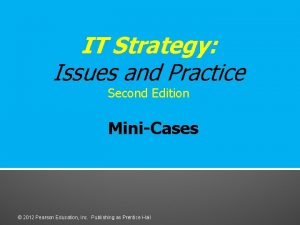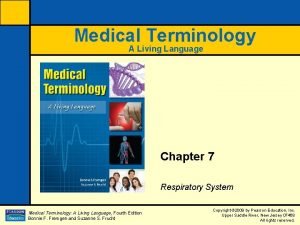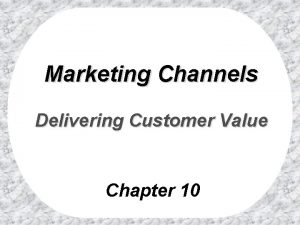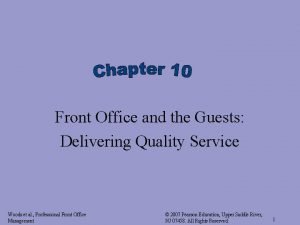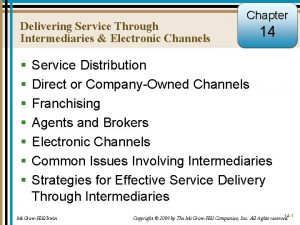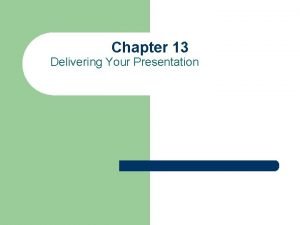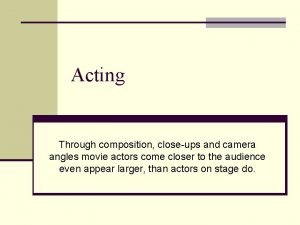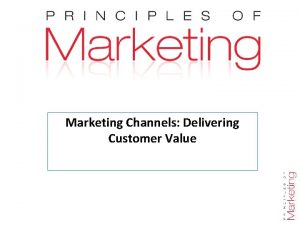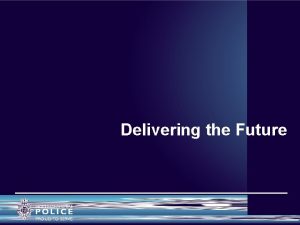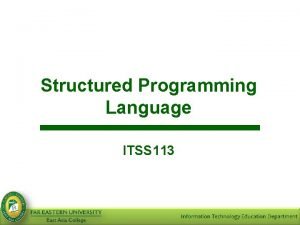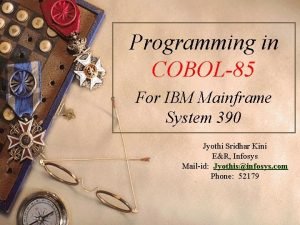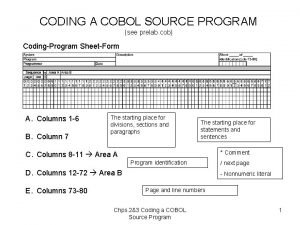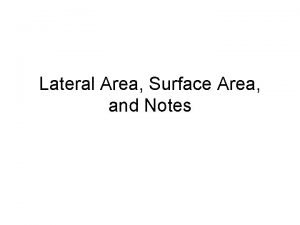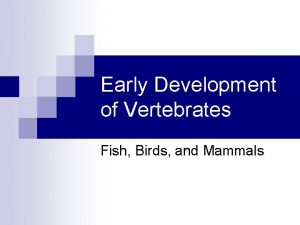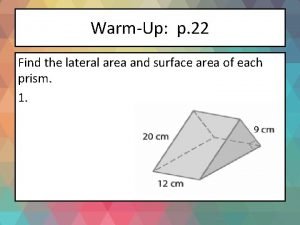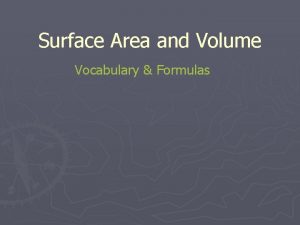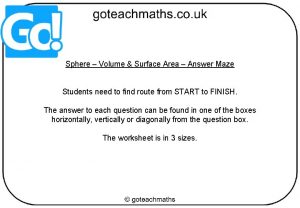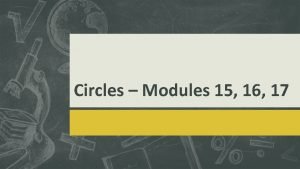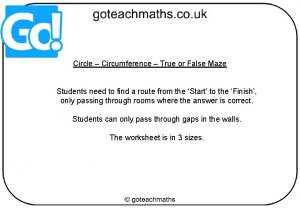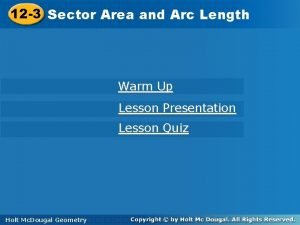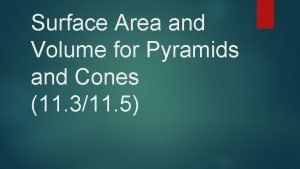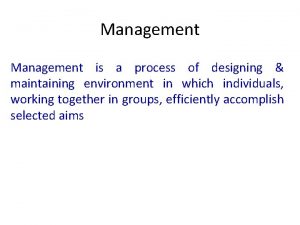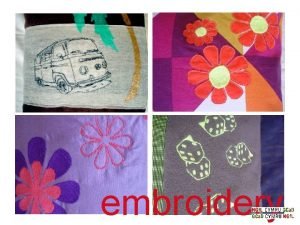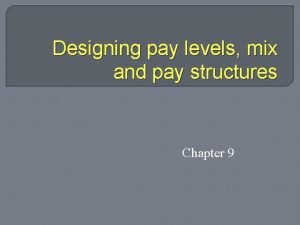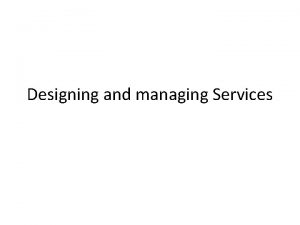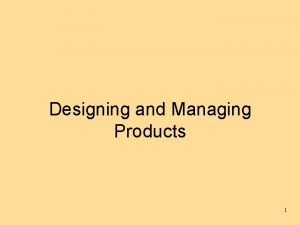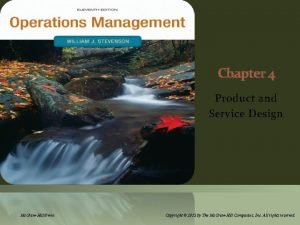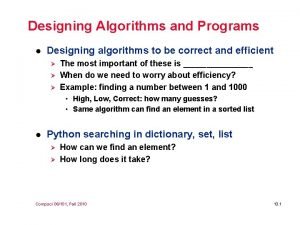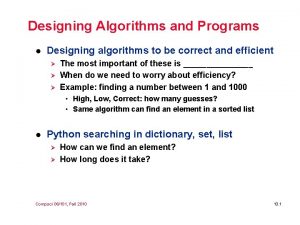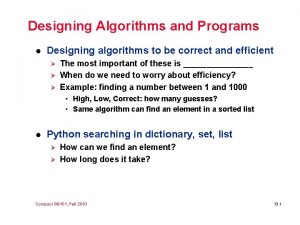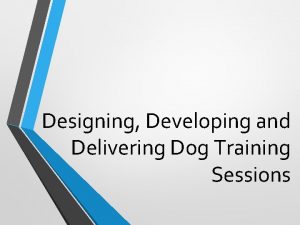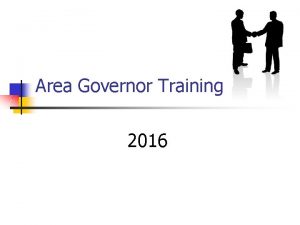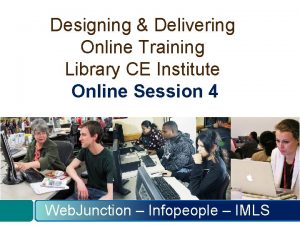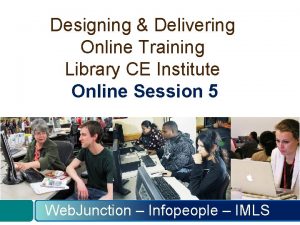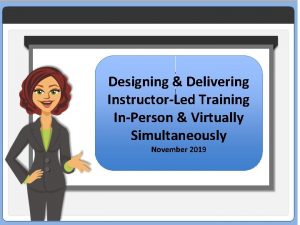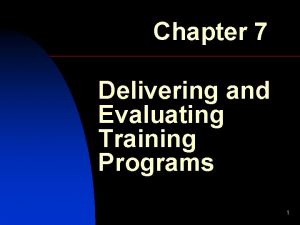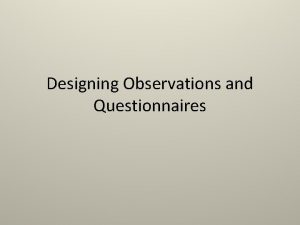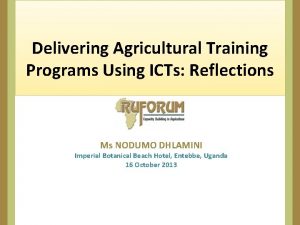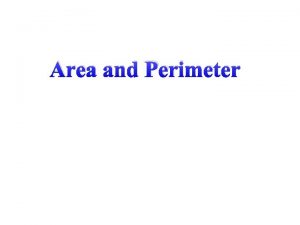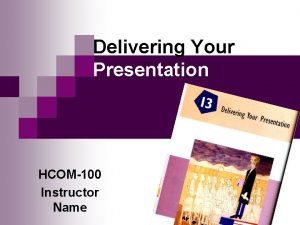Designing and Delivering Training Programs Key Area 3

































































- Slides: 65


Designing and Delivering Training Programs Key Area: 3 (Administration) USDA Professional Standards Codes: 3400 (Human Resources and Staff Training)

Activity: Head, Hands, Heart, and Home Head = I am very knowledgeable of ____. Hands = I am good at ____. Heart = I feel passionately about ____. Home = I live/work at ____.

Pre-Assessment • Method of determining whether learning objectives were met • No name needed • Use 4 -digit number

Lesson 1: How Adults Learn After completing this lesson, participants will be able to: • apply the Principles of Adult Learning to training design and delivery. • identify the Five Moments of Learning Need. • describe cognitive overload and how to manage it. • apply “brain rules” to enhance adult learning.

Key Terms • Chunking • Cognitive overload

Activity: Best/Worst Exercise

Principles of Adult Learning • Adults are internally motivated and self-directed. • Adults bring life experiences and knowledge to the classroom. • Adults are relevancy oriented. • Adults are goal oriented. • Adults are practical and learn by doing.

Five Moments of Learning Need • Learning for the first time • Needing to learn more • Remembering and applying • Doing something that has changed • Dealing with problems/things that have gone wrong

Video: Five Moments of Learning Need https: //www. youtube. com/watch? v=JAa. Aqg. P 72 u 4

Activity: Moments of Learning Need 1. List 1– 2 things you have learned within the past six months. 2. Why did you learn these things? 3. How does it relate to one of the 5 Moments of Learning Need?

Cognitive Overload

Video: I Love Lucy https: //www. youtube. com/watch? v=8 NPz. LBSBz. PI

Chunking Breaking information into smaller units

Activity: Memory Exercise

Trial I I H I E X W L M S O P T H I Y

List the Letters You Remember


Trial II I LET HIP SO WHY MIX

List the Letters You Remember


Four Steps to Chunking • Start broadly • Break it down • Organize content • Consider retainability

Activity: Brain Rules Research www. brainrules. net/about-brain-rules

Lesson 2: Developing Effective Trainings After completing this lesson, participants will be able to • develop measureable learning objectives, • construct a content outline by utilizing the ROPES Model, • identify a variety of methods for presenting content, and • plan a variety of exercises to reinforce learning.

Objectives • Guide for our lessons • Mode of measuring learning • Mode of measuring our success

ASK • Attitudes (affective) • Skills (psychomotor) • Knowledge (cognitive) What attitude, skill, or knowledge do you want learners to acquire?

Writing the Objectives • Who – the group you are training • Will be able to – should be able complete a specific action • What – in relation to what attitude, knowledge, or skill

Ask Yourself • Who? Staff • Will be able to… Operate • What? The new dishwasher

The Learning Objective By the end of this training, staff will be able to operate the dishwasher.

Examples • Attitudes = After completing this training, participants will be able to comply with the handwashing requirements that are listed in our local food code. • Skills = After completing this training, participants will be able to demonstrate thorough handwashing using the five items at a properly stocked handwashing station. • Knowledge = After completing this training, participants will be able to list times when hands should be washed.

Activity: Writing Learning Objectives • Use the Knowledge Category handout • Develop 1 knowledge-based objective • Remember – who, will be able to, what

Ropes Model R – Relate and Review O – Overview P – Presentation E – Exercise and Evaluate S – Summary

R – Relate and Review The purpose of this step is to increase learners’ readiness to receive the material in the upcoming lesson. • Why is this important? • How does this relate to my job?

Activity: Hook the Learners want to know, “What’s in it for me? ”

O – Overview The purpose of this step is establish our expectations. • Provide overview • Develop learning objectives • How will compliance be measured?

Activity: Set the Tone What should your staff/participants be able to do after your training? What expectations do you have of them after the training is complete?

P – Presentation The purpose of this step is to determine the method we will employ to present the content of our training. • Videos • Lecture-discussion • Small group work

Activity: Training Methods • How do you like to teach? • How does your audience like to learn?

E – Exercise and Evaluate The purpose of this step is to identify activities that allow learners to apply what they’ve learned. • Skill practice • Games • Skits

Activity: Training Beats How can you involve your audience, prevent boredom, and evaluate learning?

S – Summary The purpose of this step is to evaluate the content and knowledge transfer. • Recap topics discussed/highlight key points • Answer questions • Next steps

Don’t Forget! • Collect feedback • What works • What doesn’t work • Any evaluation is better than no evaluation

Activity: Post-training Evaluation What should you ask?

Lesson 3: Planning and Logistics After completing this lesson, participants will be able to • create and act upon a preparation checklist, • comprehend the importance of the scoping call, • identify contingency plans, and • explain key aspects of travel logistics related to training.

Activity: Create a Timeline Initial 4 Weeks Prior 1 Week Prior Day of Training Post Training

Scoping Call • Understand our audience • Identify responsibilities • Find the training location • Plan for required breaks What else?

Activity: Contingency Planning • How could pre-planning prevent the disaster from happening? • What strategies would you use to overcome this, if it happens during a training event?

Travel Logistics ü Car, plane, or train ü Rental vehicle or public transportation ü Hotel ü Travel Policy

Lesson 4: Delivering Effective Trainings After completing this lesson, you will be able to • describe approaches for effectively opening a training and gaining the audience’s attention; • List common verbal cues and techniques for improved verbal communication; • List common nonverbal cues and techniques for improved nonverbal communication; and • Describe distracting habits, as well as how to avoid them.

Delivery is Important

Know the Material • To maintain credibility • To maintain the audience’s attention • To prevent using crutches • To decrease anxiety

Set the Tone “You never get a second chance to make a first impression. ” • Use humor • Tell stories • Ask questions

Using Humor • Stories • Cartoons • Images • Video clips

Storytelling • Example from your own experience • Something that happen to a colleague • Recent news article • Current events

Asking Questions • Focuses the audience’s attention • Questions for responses • Rhetorical questions

Communication

Verbal Communication • Word usage • Word accentuation • Pitch • Volume • Rate • Tone

Nonverbal Communication • Posture • Eye contact • Body movement • Facial expression

Distracting Habits • Nuisance Words • Fidgeting • Avoiding eye contact • Pacing

Lesson 5: Application and Practice After completing this lesson, participants will be able to • apply best practices to design and deliver a training.

Activity: Application and Practice

Congratulations!!!

Activity: Wrap Up • Where do I glow? • Where do I need to grow?

Post-Assessment • Method of determining whether learning objectives were met • No name needed • Use sign-in number

The University of Mississippi School of Applied Sciences www. theicn. org 800 -321 -3054 Come follow ICN on Social Media! facebook. com/ichildnutrition @ichildnutrition instagram. com/theicn pinterest. com/theicn
 Designing and delivering oral and online presentation
Designing and delivering oral and online presentation Steps in designing hrd programs
Steps in designing hrd programs Obero spm
Obero spm Designing and implementing brand architecture strategies
Designing and implementing brand architecture strategies Designing and implementing brand architecture strategies
Designing and implementing brand architecture strategies Hrd program
Hrd program Designing marketing programs to build brand equity
Designing marketing programs to build brand equity Designing functional programs
Designing functional programs Collection of programs written to service other programs.
Collection of programs written to service other programs. Conversation
Conversation Customer value satisfaction and retention
Customer value satisfaction and retention Define security education
Define security education How to secure a local area network
How to secure a local area network Central training room
Central training room Manuscript for speech
Manuscript for speech Organizing and delivering an entertainment speech
Organizing and delivering an entertainment speech Civil rights training certificate
Civil rights training certificate Components of effective pre-departure training programs
Components of effective pre-departure training programs Rater error training programs include
Rater error training programs include Frisco gt training programs
Frisco gt training programs Key partners in business model canvas
Key partners in business model canvas Key partners
Key partners 6 step protocol for delivering bad news
6 step protocol for delivering bad news Iconography
Iconography Common issues involving intermediaries
Common issues involving intermediaries Chapter 33 delivering dental care
Chapter 33 delivering dental care Marketing channels: delivering customer value
Marketing channels: delivering customer value Biggest obstacle in delivering defect free code
Biggest obstacle in delivering defect free code Delivering business value with it at hefty hardware
Delivering business value with it at hefty hardware Health and wellbeing 2026
Health and wellbeing 2026 Two pronged plastic device for delivering oxygen
Two pronged plastic device for delivering oxygen Marketing channels delivering customer value
Marketing channels delivering customer value Marketing channels delivering customer value
Marketing channels delivering customer value Delivering quality service
Delivering quality service Delivering business value with it
Delivering business value with it French and indian war
French and indian war Terry schuster
Terry schuster Delivering services through intermediaries
Delivering services through intermediaries Delivering your presentation
Delivering your presentation Delivering lines based loosely on the written
Delivering lines based loosely on the written Sarah is delivering a presentation on the solar system
Sarah is delivering a presentation on the solar system Multi channel distribution
Multi channel distribution Delivering the nuclear promise
Delivering the nuclear promise Delivering the future
Delivering the future It is an art and science of erecting structures
It is an art and science of erecting structures Cobol area a and area b
Cobol area a and area b Ibm system/390
Ibm system/390 Curved surface area and total surface area of cone
Curved surface area and total surface area of cone Cobol area a and area b
Cobol area a and area b Lateral vs total surface area
Lateral vs total surface area What is the lateral area
What is the lateral area Gatrulation
Gatrulation Find the lateral area and surface area of each prism
Find the lateral area and surface area of each prism Rectangular prism definition math
Rectangular prism definition math Volume maze answer key
Volume maze answer key Arc length and sector area module 16
Arc length and sector area module 16 Area and circumference maze answer key
Area and circumference maze answer key Area of sector
Area of sector How to find the perimeter of composite figures
How to find the perimeter of composite figures Volume of pyramids and cones worksheet
Volume of pyramids and cones worksheet The process of designing and maintaining an environment
The process of designing and maintaining an environment Computer design embroidery
Computer design embroidery Designing a pay structure
Designing a pay structure Designing and managing service product
Designing and managing service product Managing products and brands
Managing products and brands Product and service design
Product and service design

